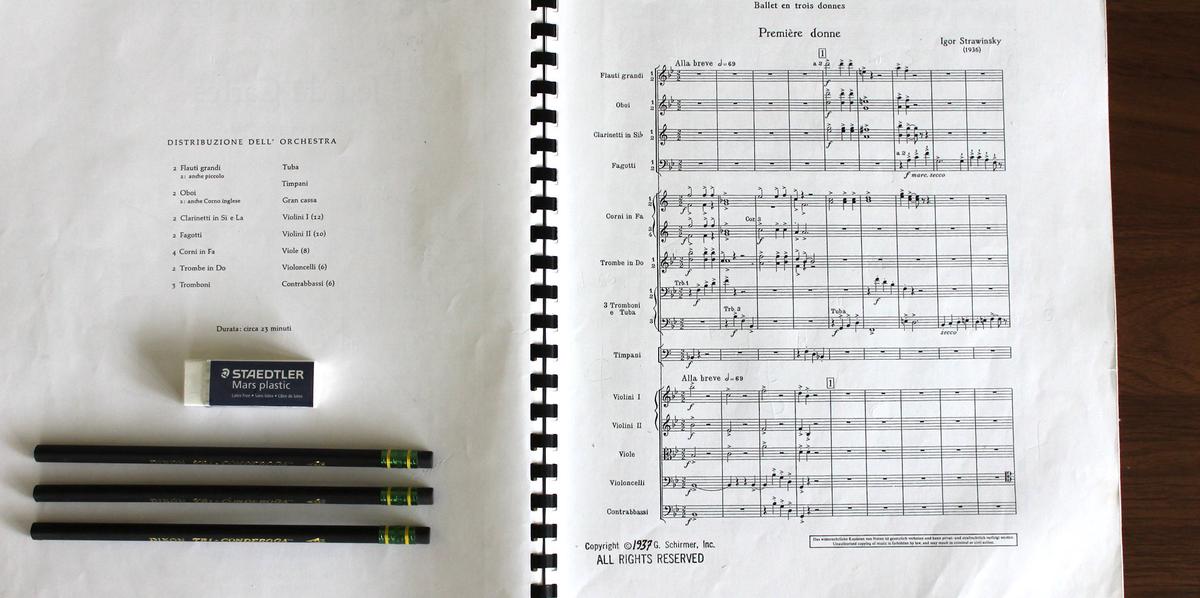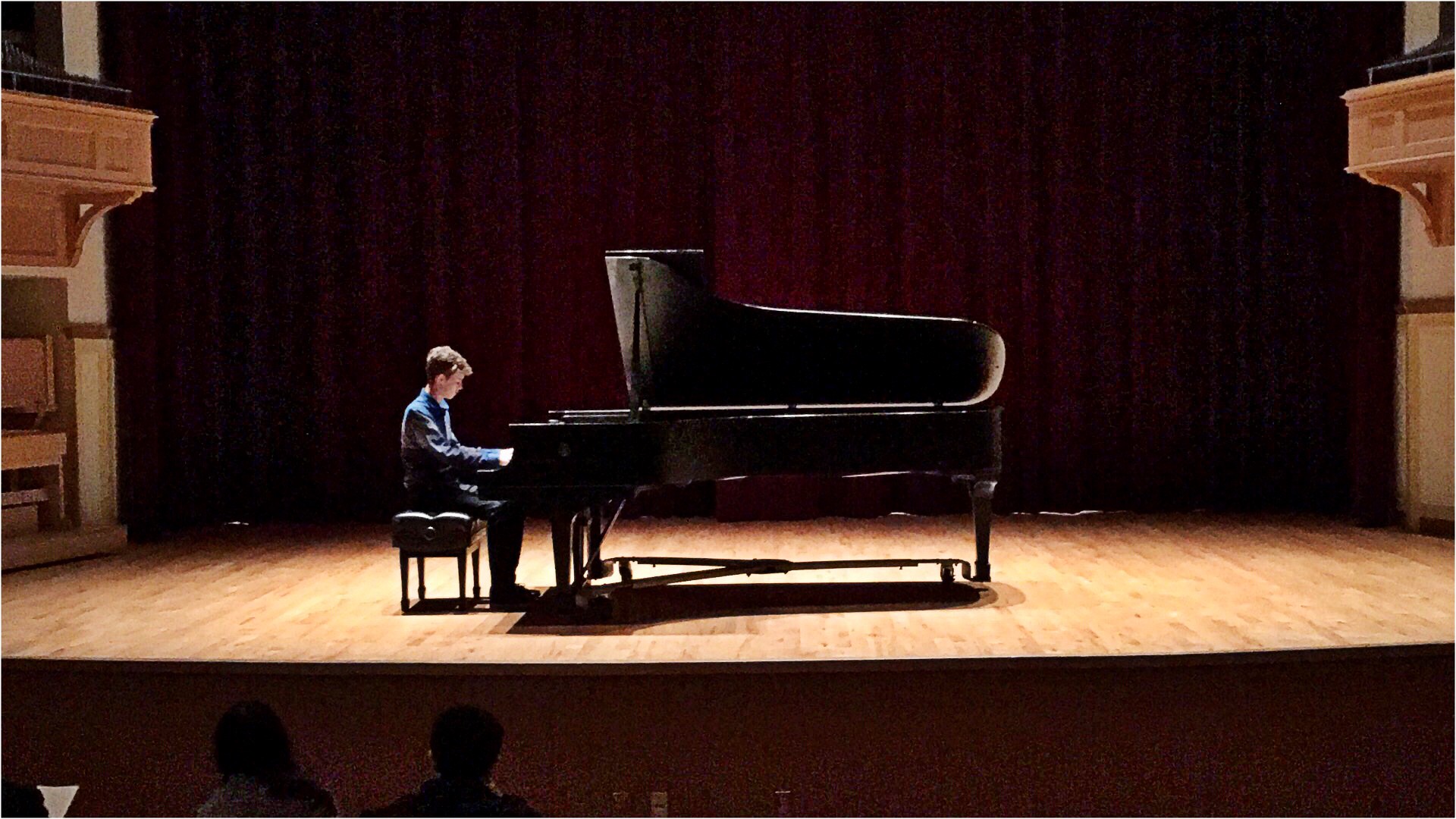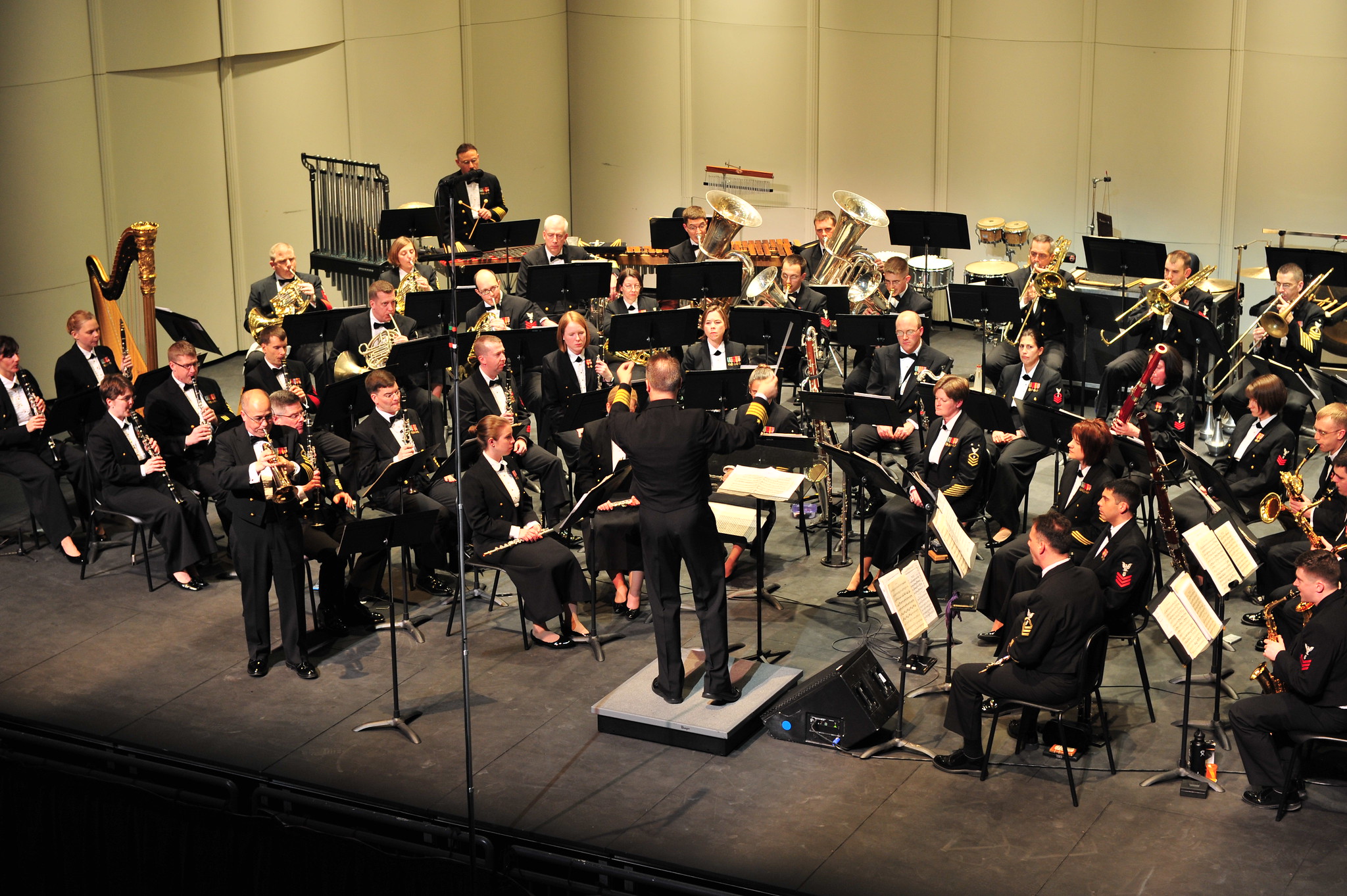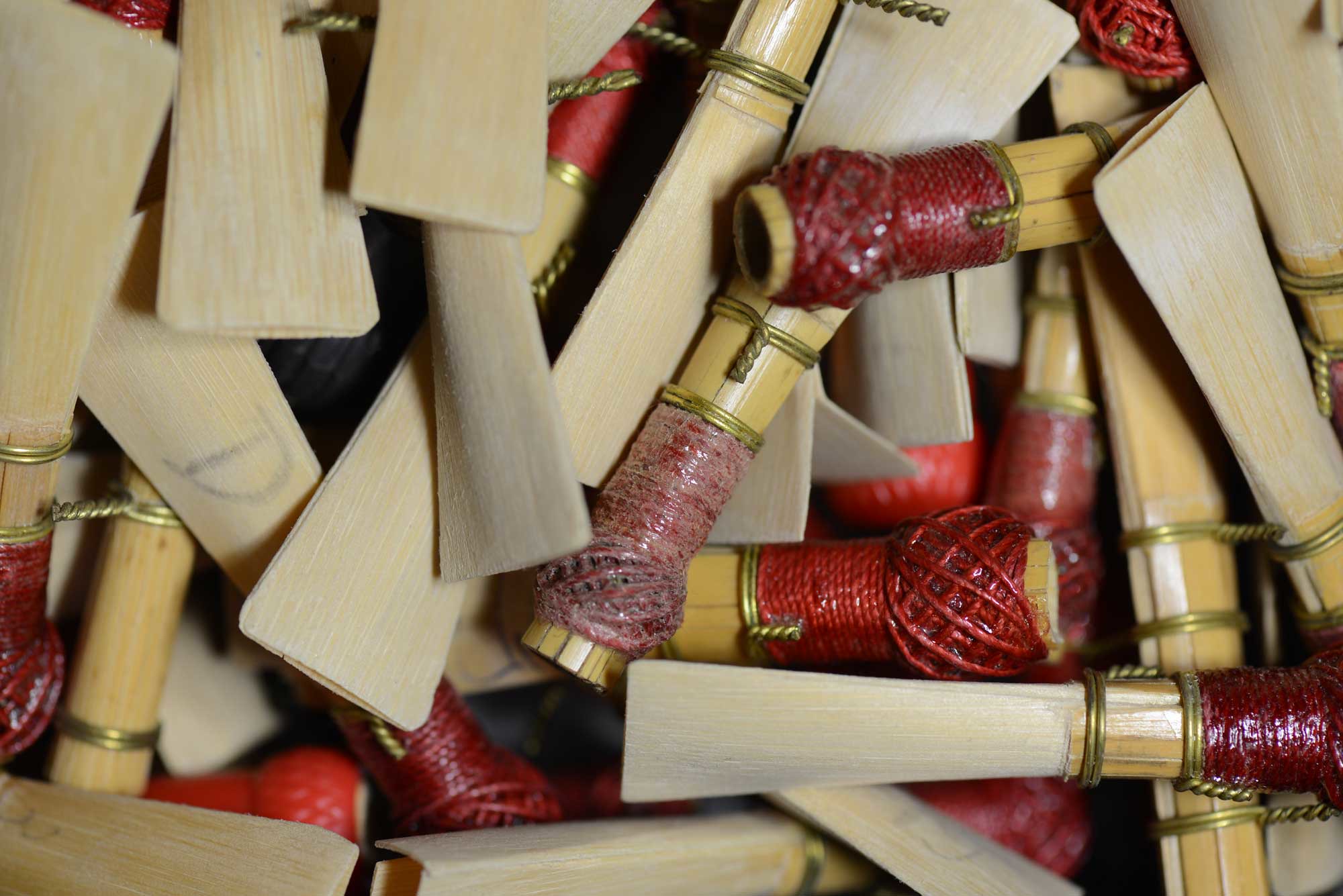Score Order: the order in which the multiple instruments of an ensemble are laid out on a piece of music.
Composers, arrangers, and orchestrators have been writing music for ensembles of instruments for centuries, and over time, the arrangement of the instruments on the page became standardized, a practice we call score order. But what is the proper score order and why? We are going to break down how instruments are traditionally laid out on a score and discuss the nuances between different types of ensembles.
Guiding Philosophy
There are many ways one could organize instruments on a page: alphabetically, high to low, order that they sit, and so forth. But the question you have to ask is what makes the most sense to the person reading the score?
As conductors are the primary audience for ensemble scores, it makes sense to arrange the instruments in a way that makes it easy for them to read quickly.
There is some standardization within ensembles as far as seating, but there is no one way instruments are arranged. But what is consistent is that families of instruments stick together. The family groups organized in a qusai high to low manner, and also within each family, they are high to low.
This helps when a conductor wants to address just the woodwinds, or just the strings, as all the music for those sections is grouped together on the page.
Let's get much more specific, shall we?
From the Top: The Woodwinds
Orchestral Score Order
If the score contains woodwind instruments, then they are the first to be listed, and are generally arranged as follows:
-
Flute Family
- Piccolo
- Flute
-
Oboe Family
- Oboe
- English Horn
-
Clarinet Family
- Bb Clarinet
- Bass Clarinet
-
Bassoon Family
- Bassoon
- Contrabassoon
If any instrument is not written for, it is just left out of the order. If the composer adds any other member of the family (i.e. Alto Flute, Eb Clarinet), it is grouped with that family and added in order of range (high to low). For example, if the score called for an Alto Flute, it would be placed in the score below the flute and above the oboe.
Concert Band Score Order
It is typical for concert bands to include a saxophone family, placed below the clarinets. Also, double reeds are often (but not always) grouped together. A typical concert band woodwind section would be ordered as follows:
-
Flute Family
- Piccolo
- Flute
-
Double Reed Family
- Oboe
- Bassoon
-
Clarinet Family
- Bb Clarinet
- Bass Clarinet
-
Saxophone Family
- Alto Saxophone
- Tenor Saxophone
- Baritone Saxophone
The Loud Ones in the Back: The Brass
Orchestral Score Order
The Horn in F (sometimes called the French Horn), has always had a place of prominence in orchestral scores, as they have often been the rhythmic or harmonic glue that holds both sections together. They are typically listed at the top of the brass section. The remainder of the brass section is listed by family from high to low, though it is not typical for instrument families to include more than one member.
The typical brass section of the orchestral score is arranged as follows:
-
Horn in F
-
Trumpets in Bb
-
Trombone Family
- Trombone
- Bass Trombone
-
Tuba
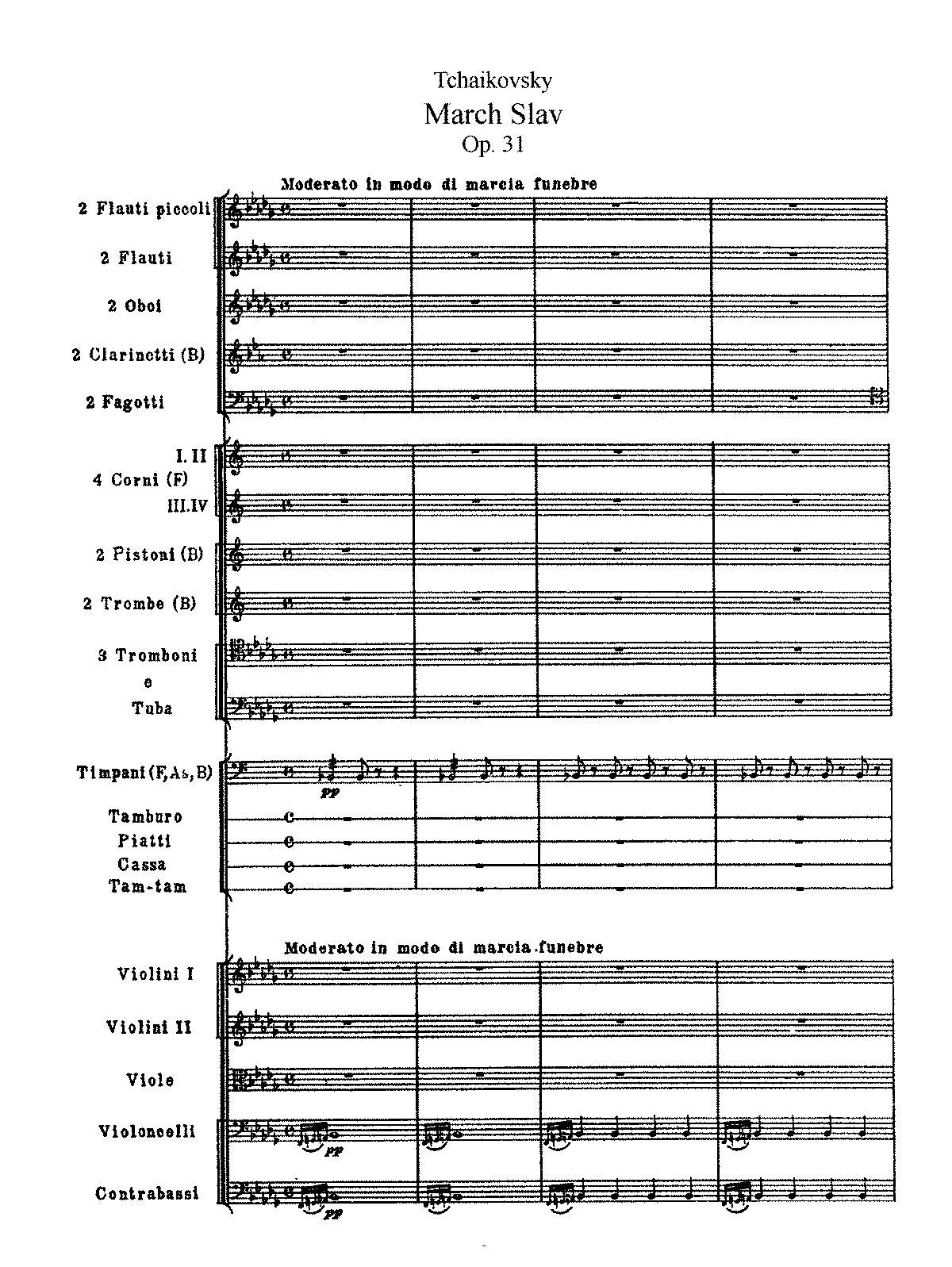
Concert Band Score Order
Different from the orchestral score, a concert band score typically lists the trumpets first, as they often play a leading melodic role in concert band music, at least as far as the brass section is concerned. The horns don’t play the same role in concert band music as they do in orchestral music, as the saxophone family can fill in that role for the woodwinds quite nicely.
This leaves the horns to be treated as a brass instrument through and through, resulting in this typical concert band score order for the brass:
-
Trumpet in Bb
-
Horn in F
-
Trombone Family
- Trombone
- Bass Trombone
-
Baritone/Euphonium
-
Tuba
Right on Time: The Percussion
Orchestral Score Order
Traditionally, percussion in orchestral scores is minimal. The timpani has served in traditional orchestra scores the longest, and is usually placed at the top. What makes orchestral scores unique is that they typically assign one instrument per line in the percussion section, which is different from the concert band philosophy. As more and more colors and sounds are needed, this practice is shifting.
That being said, most text will say that percussion has no real defined order, but the following can serve as a guide for orchestral scores:
-
Timpani
-
Metallic, unpitched percussion
- Cymbals
- Triangle
- Tam-Tam
-
Drums
- Snare Drum
- Bass Drum
-
Pitched Percussion
- Mallets
- Chimes
As stated before, there is a lot of variation in this arrangement. Pitched percussion may be placed ahead of the drums in certain cases, at a lot of this is up to the composer, arranger, orchestrator, or engraver to determine what would be most practical for the conductor.
Concert Band Score Order
Concert band scores tend to use much more percussion. As such, it is very typical to have the percussion parts labeled Percussion 1, Percussion 2, etc, with practicality driving the assignment of the various instruments to each part.
When individual instruments are given their own part, the score order identified in the orchestra is appropriate, though any arrangement is generally accepted.
The Nebulous Void: Everyone Else (Except Strings)
Orchestral Score Order
Below percussion and above the strings is the “everybody else” category. This is usually where a concerto soloist would be placed, as well as singers, unusual instruments like the guitar family, other keyboards like organ or accordion.
While these are not as typical in orchestral scores, they are often found like so:
-
Keyboards
- Harp
- Piano
- Orgon
-
Voices
- Solo Voices
- Ensemble Voices
-
Picked Strings
- Mandolin
- Ukelele
- Banjo
- Guitar
- Bass Guitar
-
Concerto Soloist
Band Score Order
There is even less of this in concert band music. And when these types of instruments are introduced, it's even less standard than it is in orchestral scores.
- Keyboards are usually placed at the bottom of the percussion section.
- Voices are typically placed at the very top or very bottom of the score.
- Picked Strings are placed below the keyboards (or percussion if there are no keyboards)
- A Concerto Soloist can be placed wherever it makes the most sense. I have seen everything from right above its family of instruments, above the saxophone, between Woodwinds and Brass, or at the very top of the score.
Last But Certainly Not Least: The Strings
Orchestral Score Order
This score order is the most standard of all, as the orchestral string section has been the backbone of the orchestral ensemble for centuries. Ordered by relative pitch to each other, the score order for the string section is as follows:
-
Violin 1/2
-
Viola
-
Cello
-
Bass
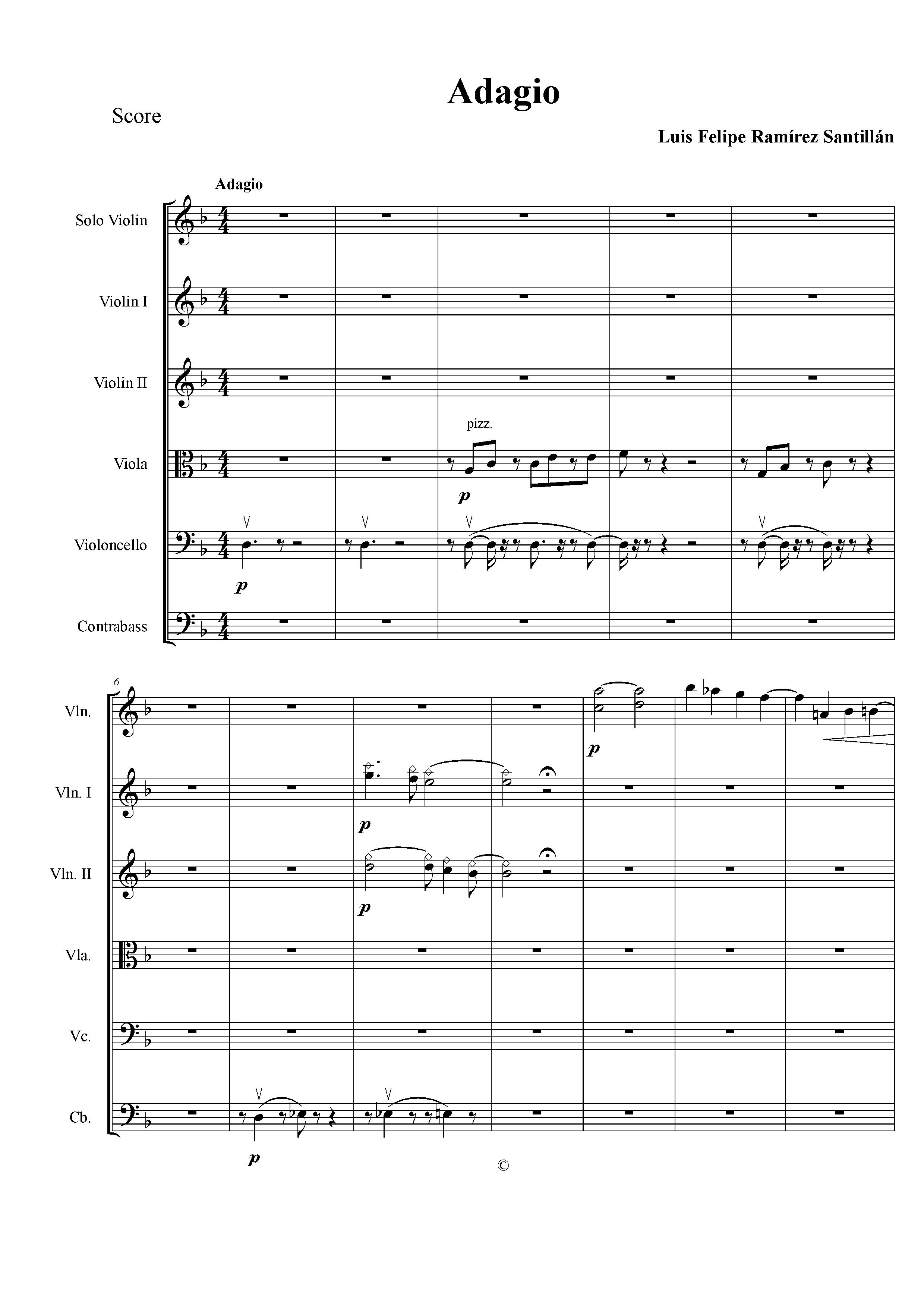
Concert Band Score Order
By definition, a concert band does not have a string section. It is made of wind and percussion instruments. However, many concert bands will have a single string bass to round out the low end of the ensemble. This is usually the lowest instrument on the score.
Other Common Ensembles
Marching Band Score Order
The marching band score does not differ much from the concert band score, though the instrumentation is pretty standardized for the majority of marching bands.
-
Woodwind Family
- Flute/Piccolo
- Bb Clarinet
- Saxophone Family
-
Brass Family
- Trumpet
- Horn/Mellophone
- Trombone
- Tuba
-
Pit Percussion
- Timpani
- Bells/Xylophone
- Auxillery
-
Drum Line
- Snare
- Quads
- Bass Drum
- Cymbals
One interesting variation you may find in marching band scores is the condensing of similar material. Since the most common orchestration style for marching band is a lot of doubling to ensure clarity on the field, you may run across scores that arranged as follows:
- Flute
- Clarinet
- Alto Saxophone
- Trumpets
- Horns
- Low Brass / Woodwinds (these lines would be the same for both low saxophones, low clarinets, trombones, and euphoniums)
- Tuba
- Percussion
Other variations exist, but again, there is functionally not much difference in order between marching band and concert band.
Jazz Band Score Order
Again, a jazz band score order does not differ much from the others. There is, however, one functional consideration that influences the lower part of the score. In jazz bands, the piano, guitar, bass, and drums, form a section of the ensemble known as the rhythm section. These instruments are grouped together as their own class instead of being put into their orchestral categories.
A typical jazz band score would be arranged as such:
-
Saxophone Family
- Alto Saxophone
- Tenor Saxophone
- Baritone Saxophone
-
Brass Family
- Trumpets
- Trombones (inc. Bass Trombone)
-
Rhythm Section
- Piano
- Guitar
- Bass Guitar and/or Upright Bass
- Drums Kit
Of course, other wind instruments could be added and would follow the same practice as Orchestra and Concert Band Scores. Additional percussion instruments would be folded into the rhythm section where it makes sense, though typically the piano is at the top and the drum kit at the bottom.
Conclusion
That is quite a lot of information, but hopefully it provides some guidance as to what the typical score order is for various large ensembles and answers some whys along the way.
Grouping by instrument family, and in some cases, instrument function, allows for an easy to read and reference score that can help follow a piece of music for the interested listener, a music scholar, or an ensemble’s conductor.
